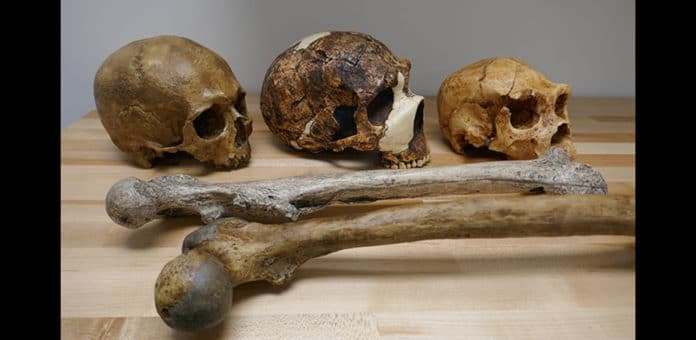What climate change does to the human body?
Climate and weather have always influenced human health in several ways. A new study has suggested that climate changed the size of our bodies and brain as well to some extent.
According to scientists, colder, harsher climates drove the evolution of larger body sizes, while warmer climates led to smaller bodies. Brain size also changed dramatically but did not evolve in tandem with body size.
To study how climate change affects human life, especially in terms of the evolution of body and brain size, scientists gathered measurements of body and brain size for over 300 fossils from the genus Homo found across the globe. They combined their data with a reconstruction of the world’s regional climates over the last million years.
They also pinpointed the specific climate experienced by each fossil when it was a living human.
Based on the data, scientists reveal that the average body size of humans has fluctuated significantly over the last million years, with larger bodies evolving in colder regions.
Professor Andrea Manica, a researcher in the University of Cambridge’s Department of Zoology who led the study, said, “Our study indicates that climate – particularly temperature – has been the main driver of changes in body size for the past million years. We can see from people living today that those in warmer climates tend to be smaller, and those living in colder climates tend to be bigger. We now know that the same climatic influences have been at work for the last million years.”
Scientists also determined the effect of environmental factors on brain size in the genus Homo. It was found that when Homo was living in habitats with less vegetation, like open steppes and grasslands, their brain size tended to be larger. Archaeological data suggests that people living in such habitats hunted large animals for food. This was a complex task that might have driven the evolution of larger brains.
Dr. Manuel Will at the University of Tubingen, Germany, the first author of the study, said, “Different factors determine brain size and body size- they’re not under the same evolutionary pressures. The environment has a much greater influence on our body size than our brain size.”
“There is an indirect environmental influence on brain size in more stable and open areas: the amount of nutrients gained from the environment had to be sufficient to allow for the maintenance and growth of our large and particularly energy-demanding brains.”
This research also suggests that non-environmental factors were more important for driving larger brains than climate, prime candidates being the added cognitive challenges of increasingly complex social lives, more diverse diets, and more sophisticated technology.
Scientists noted, “There is good evidence that human body and brain size continue to evolve. The human physique is still adapting to different temperatures, with larger-bodied people living in colder climates today. Brain size in our species appears to have been shrinking since the beginning of the Holocene (around 11,650 years ago). The increasing dependence on technology, such as outsourcing of complex tasks to computers, may cause brains to shrink even more over the next few thousand years.”
This study was conducted by the Universities of Cambridge and Tübingen. It was funded by the European Research Council and the Antarctic Science Platform.
Journal Reference:
- Will, M. et al.: ‘Different environmental variables predict body and brain size evolution in Homo.’ Nature Communications, July 2021. DOI: 10.1038/s41467-021-24290-7
